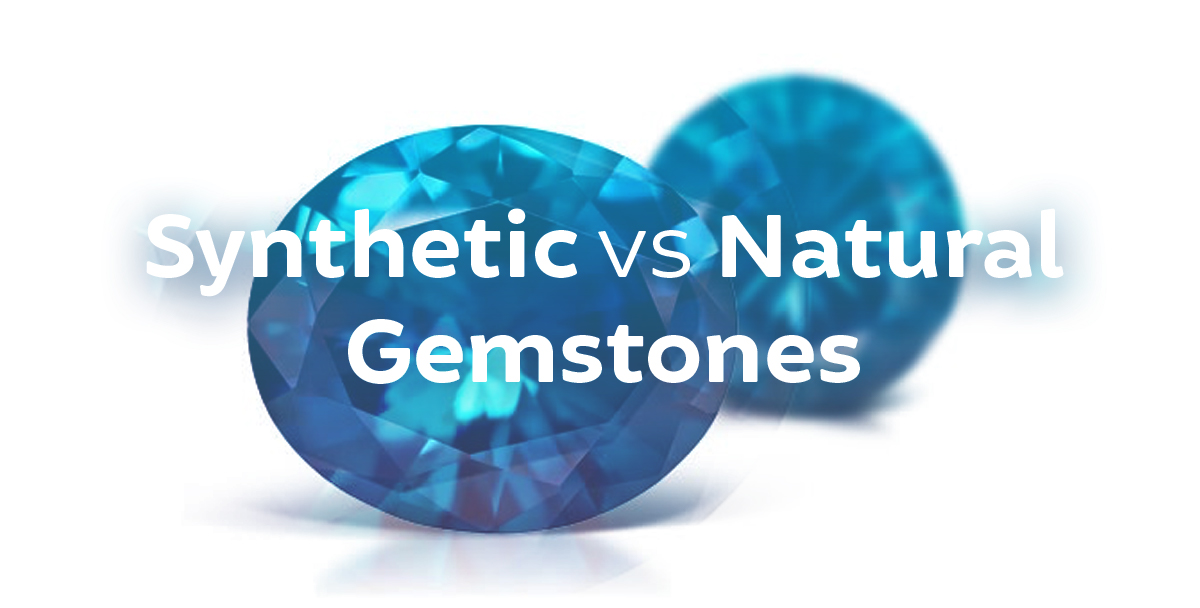Sales & Marketing
Synthetic Gemstones vs Natural Gemstones
A common aspect of managing a jewelry store is educating clients on each jewelry piece. Consumers are more inquisitive and like to know what they are buying. One question they will often as jewelers is the differences between synthetic gemstones vs natural gemstones. Are synthetic gemstones as real as the real thing? How does this affect value? How do I know that the engagement ring I’m buying is real? Helping consumers understand what they are purchasing builds trust, an important part of conducting a successful business. Here is a refresher on the differences between synthetic gemstones vs natural gemstones.
Natural Gemstones
Natural gemstones can be uniquely identified by their mineral makeup. They are found growing in or produced by the natural world (ie. Natural mines or the ocean) without human intervention. The makeup gives the gem its clarity, color and appearance. Natural stones may be treated to enhance certain features, but there is no dispute about their origins.

Synthetic Gemstones
Synthetic gemstones have been in production since the late 1800s. They can be manufactured to share the same identical mineral makeup as a natural gemstone. In other words, they can have the same chemical, optical and physical characteristics of their natural gemstone counterparts. These gemstones are often classified as ‘lab-created or ‘synthetic’ because they are physically identical to those found in nature, but are produced in a controlled environment. Labs can mimic natural processes and control chemicals, minerals, temperature and pressure to ‘grow’ each gemstone.
Types of Synthetic Gemstones
There are many types of gemstones that are grown through synthetic processes. Here are the most common ones:
Synthetic Corundum
This can be created through many different processes and includes gemstones like ruby and sapphire. The first lab-created gemstone, ruby, was created in the late 1800s by Auguste Verneuil.
Synthetic Beryl
Synthetic beryl provides aquamarine and emerald gemstones.
Synthetic Quartzes
Naturally-occurring quartzes like citrine, rose quartz, and amethyst are plentiful. They were originally produced for their ability to generate electricity which become important in the production of watches, clocks, filters, and oscillators.
Synthetic gemstones vs natural gemstones: How to spot the differences
Gemstone Clarity
If both natural gemstones and synthetic gemstones share an identical mineral makeup, how can you tell the difference? One of the biggest differences between the two is the clarity of the gemstone. Typically, a synthetic gemstone will have better clarity because it can be controlled during the manufacturing process. A synthetic gemstone will show better color and have fewer inclusions compared to a natural gemstone. In fact, natural gemstones often need to undergo other processes to bring out their color or remove inclusions. Commonly synthesized gemstones include pearls, sapphires, rubies, emeralds, and diamonds.
Gemstone Value
Despite the superior quality of a lab-created gemstone, clients will prefer natural gemstones vs synthetic gemstones simply because of they are rare. The allure of rarity will drive up prices for natural gemstones compared to synthetic gemstones. Gemstones like rubies and sapphires can be produced less expensively making them more widely available and less expensive for the consumer.
Benefits of Synthetic Gemstones
Vendors who choose to sell synthetic gemstones will see some immediate benefits that will pass along to the consumer. We already touched on how synthetic gemstones are less expensive than natural gemstones. However, this does not mean ‘cheap’. A synthetic gemstone is nearly identical to a natural gemstone. While synthesized and mined gemstones share costs to cut, polish and inspect each gemstone, synthetic gemstones have a more straightforward manufacturing process. Mined gemstones have a long supply chain getting the raw materials to be retail-ready. Conversely, synthetic gemstones touch fewer hands keeping cost low.
In addition to cost, lab-created gemstones are environmentally friendly. It is no secret that mining practices have a significant negative impact on the environment. By relying on synthesized gemstones, retailers and manufacturers can minimize the effects they have on our ecosystem. The process takes less energy to produce gemstones which saves money and cuts costs. There is also the added benefit of skipping the whole mining process.
Another benefit of synthetic gemstones is that they are ethically sourced. The mining industry, especially in regards to diamonds, is notorious for enacting harmful practices and endangering the lives of workers. In 2003, regulations were put in place to reduce these practices and now most natural gemstones are conflict-free. However, lab-created diamonds eliminate the possibility of unethical mining and provide retailers and consumers peace of mind.
Conclusion
According to the FTC, gemstones are classified as ‘real’ whether they are naturally-occurring or synthesized. Jewelers should understand the differences between synthetic gemstones vs natural gemstones and share this information with consumers. While savvy consumers will ask about specific products, most may not fully understand what they are purchasing. Take steps toward educating all your consumers about your inventory whether they ask or not.
At Price Point Marketing, we manufacture genuine gemstone jewelry. As a vendor for many jewelers in the United States, we take pride in providing gemstones that are identical in quality to natural gemstones. Synthetic gemstones are used in some of our birthstone jewelry. You can see our full catalogue here.

